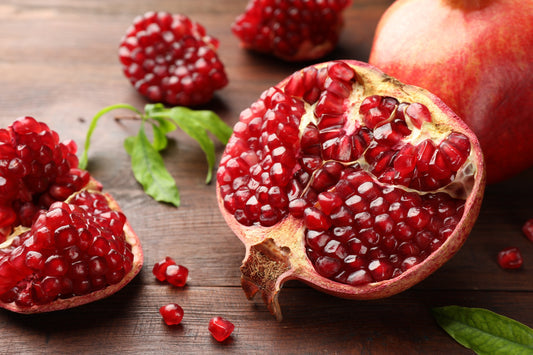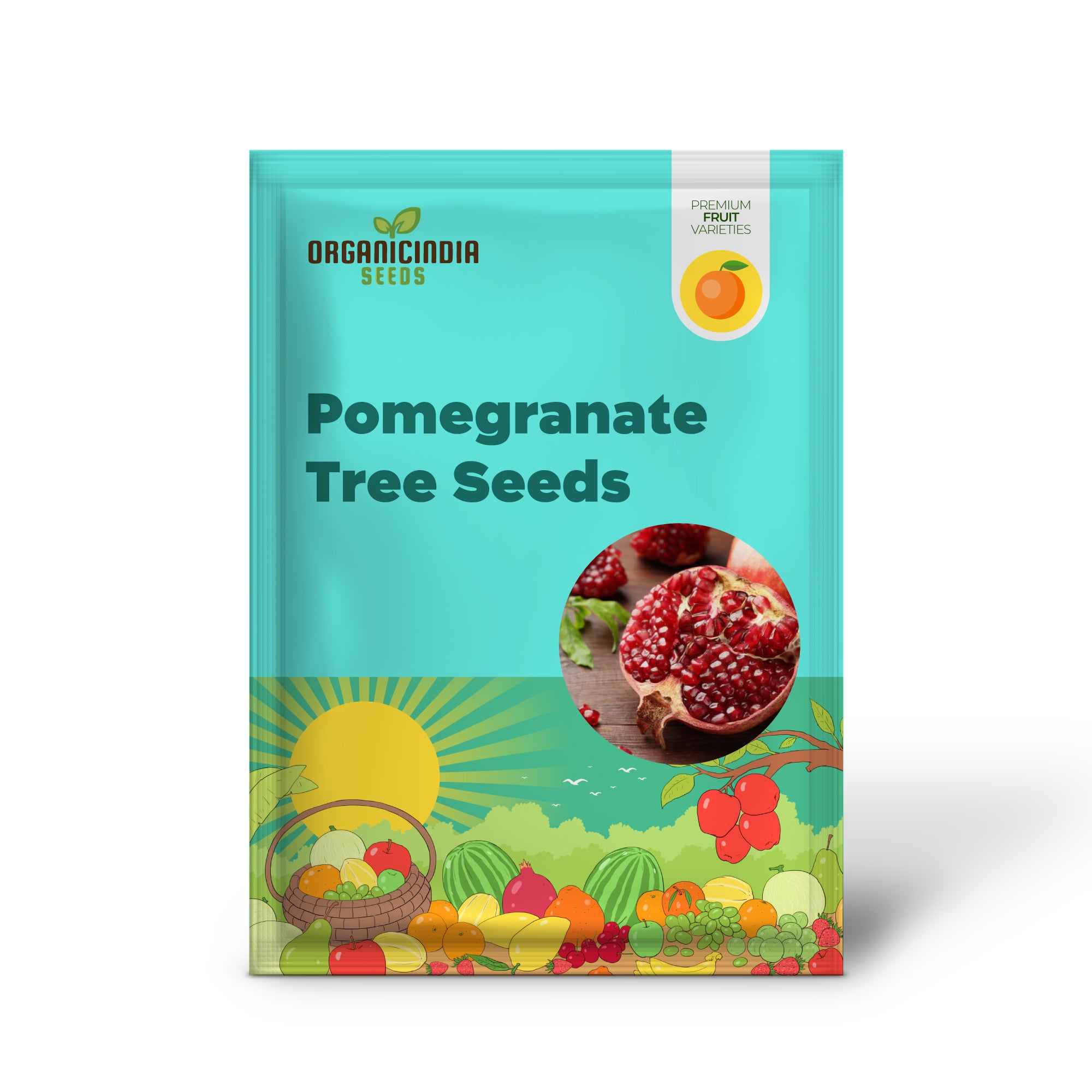



Free Shipping
Safe & Secure Payments
The Pomegranate (Punica granatum) is a stunning fruit-bearing tree known for its vibrant red, jewel-like seeds packed inside a tough rind. Native to the Middle East and parts of Asia, pomegranates have been prized for centuries for their sweet and tangy fruit, which is not only delicious but also rich in vitamins, antioxidants, and other essential nutrients. This hardy, deciduous tree can be grown in a variety of climates, making it an excellent choice for edible gardens, ornamental landscapes, and fruit orchards. With proper care, the Pomegranate tree can produce abundant fruit that is perfect for fresh eating, juices, cooking, or making preserves.
Key Features:
Growing Information:
Light:
Pomegranate trees require full sun to produce the best fruit. For optimal growth and fruiting, plant your Pomegranate tree in a location that receives at least 6-8 hours of direct sunlight per day.
Soil:
These trees prefer well-drained, sandy or loamy soil with a slightly acidic to neutral pH (6.0-7.0). While they can tolerate drought and poor soil conditions once established, pomegranates perform best in fertile, well-draining soil that retains some moisture without becoming waterlogged.
Planting Tips:
Start by soaking Pomegranate seeds for 24 hours to help with germination. Then, plant them in a seed-starting mix, lightly covering them with soil. Keep the soil consistently moist (but not soggy) and place the pots in a warm, sunny location to encourage germination, which may take anywhere from 2-6 weeks. Once seedlings are large enough and all danger of frost has passed, transplant them outdoors in a sunny spot. Space the trees 10-15 feet apart to allow for their full growth potential. If you live in a colder climate, consider planting Pomegranates in containers so they can be moved indoors during winter months.
Watering:
Pomegranate trees are drought-tolerant once established but will benefit from regular watering during the growing season, especially in dry climates. Water deeply but allow the soil to dry slightly between waterings. Avoid overwatering, as this can lead to root rot.
Benefits:
Growing Zones:
Pomegranate trees are best suited for USDA Zones 7-10, making them ideal for warmer climates. In colder regions (Zones 6 and below), Pomegranate trees can be grown in containers and brought indoors during the winter months to protect them from frost.
How to Use in the Garden:
Conclusion:
The Pomegranate tree (Punica granatum) is a fantastic addition to any garden, offering both ornamental beauty and delicious, nutrient-rich fruit. Its striking red flowers, attractive fruits, and low-maintenance care make it a perfect choice for gardeners who want to add both aesthetic value and productivity to their outdoor space. Whether you're looking to grow a fruit tree in a warm climate or a potted tree for a container garden, Pomegranates are versatile and rewarding. With its health benefits, drought tolerance, and exceptional fruit, the Pomegranate tree is a must-have for any edible landscape or fruit orchard.
Choose options

